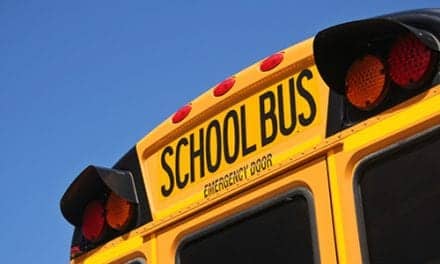The Maryland-Greater Washington, DC Chapter of the AAFA launched a course to educate child care providers about pediatric asthma and to help ensure a safe and healthy environment for children with chronic conditions.

Currently, many preschools and home-based day care providers are reluctant or refuse to accept children with moderate to severe asthma or allergies. Other providers charge more to care for an asthmatic child. To avoid this problem, some parents withhold vital information about their child’s illness. These parents are placing their children’s lives at risk because immediate care may not be available when an asthma or allergy crisis occurs.
In 1994, the Maryland-Greater Washington, DC Chapter of the AAFA decided to make a change and developed a course called Asthma and Allergy Essentials for Child Care Providers©. One of the main goals of the chapter is to educate providers about pediatric asthma to help ensure a safe and healthy environment for children with chronic conditions.
The Child Care Administration of the State of Maryland certified this course for 3 contact hours for provider licensing and relicensing. Upon completion, each provider is given a certificate verifying their participation. Course instructors are health educators, including registered nurses, respiratory therapists, and other health professionals who have completed faculty training.
Four years ago, the program was altered to make it more marketable. Another change occurred last year when the Maryland Chapter piloted a new and improved version of the program to 500 providers in the state. Providers from nursery schools, day care centers, and Head Start enrolled in the program, as well as foster care parents. Anyone who is a provider for children is welcome to attend and learn about asthma and allergies. Because this program is a vital component for the health of children everywhere, it is being launched nationally this year by the Asthma and Allergy Foundation.
The Pilot Program
When the original 1-year pilot program ended, the Maryland-Greater Washington, DC Chapter concluded that the program was still lacking essential information. It determined that the Asthma and Allergy Essentials course did not include enough environmental information about allergies. Because these can be triggers of asthma, new material was incorporated into the final version of the program, as well as a communication log.
The final program provided information on many current issues of interest to the Environmental Protection Agency (EPA), including air ducts in the home, aerosol sprays, and cockroaches. It also points out that providers need adequate environmental control in order to maintain a safe child care setting. Participants receive an environmental checklist. The program concentrates on environmental hazards, secondhand smoke, dust mites, pets, molds, pests, and house dust. It tells providers how to clear their home or day care center of asthma triggers.
Allergies
For example, information is provided on peanut allergies, which are most prevalent in children. Seafood allergies are also discussed as potential factors leading to asthma. Latex allergies, which many child care providers are unaware of, are also pointed out. Most providers think a balloon is harmless, but it could be dangerous to a child with asthma. The dangers of chalk dust are also discussed in detail.
Also incorporated in the final version of the program is information about allergies as the most common causes of asthma. Ninety percent of the children who have asthma have allergies. Students miss an estimated 2 million school days per year because of asthma.
The third addition to the program was the communication log. This is an important tool that can be used to keep track of a child’s condition. For example, a mother may drop her child off with the log stating that the child had a bad night. The log provides detailed information about what happened. During the day, the provider writes down how the child is doing. This is a wonderful exchange of information.
Modular Program
The comprehensive 3-hour program includes hands-on demonstrations along with basic information on asthma and allergies. The content of the program is at a level that child care providers can understand. A vocabulary list of frequently used terms is provided along with clearly understandable definitions. Included are such words as allergens, cause, diagnosis, environmental control, EPA, inhaler, irritant, trigger, and wheezing. To keep the attendees’ attention, the program format includes the use of standardized slides, scripts, and handouts. All the materials comply with the 1997 Expert Panel Report 2: Guidelines for the Diagnosis and Management of Asthma (National Heart, Lung, and Blood Institute/National Asthma Education and Prevention Program) as well as the 1999 Pediatric Asthma: Guide for Managing Asthma in Children. The program also incorporates ideas about indoor air quality from the EPA, which has provided a significant grant for this program as has the Maryland Childcare Administration.
Program evaluation includes a pre-test and post-test on basic asthma and allergy knowledge administrated at the start and end of the program. Each participant fills out an evaluation form immediately following the course. A follow-up survey is distributed to all participants at 6- and 12-month intervals.
The course consists of educational slides and activity sessions. The slides cover basic anatomy and physiology of the respiratory system, pathophysiology of the specific disease process, signs and symptoms of asthma and allergy episodes, how to institute environmental control measures to ward off these episodes, and how to properly use medications and tools for asthma management such as inhalers and peak flow meters. The activity sessions cover environmental controls, medications, equipment, regulations, communication, and decision strategies. Handouts are provided to participants as take-home references.
Each participant also receives an action card. The instructor/trainer of the program recommends that the provider have an action card for each child who has asthma. The card is filled out by the child’s doctor. It tells the provider what medication the child is taking, what allergies the child may have, and what the child’s personal best is, as determined by the peak flow meter. This action card also helps the provider understand what steps should be taken for the child. There is also a section that tells the provider what to do in the event of an emergency. The card is signed by the physician, the child’s parent, and the provider.
Currently, the program has 15 faculty members. Half of them are RTs who are being paid through a generous grant from the EPA. RTs have other full-time jobs and are involved in this program because of their interest in asthma. They have also provided input into the program and reviewed the current materials. Approximately seven programs a month are being offered in the evening or on a Saturday morning. They are held at child care centers, resource centers, and libraries throughout Maryland.
Purpose of the Program
Ernestine Holley, director of program services and public education, AAFA Maryland-Greater Washington, DC Chapter, says, “What this program is simply designed to do is help the provider understand that asthma can be managed. It can’t be cured, but here are the steps for management and keeping the disease under control.”
Maryann Ellis, executive director of the chapter, adds, “Approximately 14 deaths occur each day from asthma. That’s almost 6,000 deaths each year. That’s why this program offers awareness and education for child care providers. Our goals are the same today as when we started the program. We want better care for children with asthma and allergies. We want providers not to be fearful if a child has an asthma episode, and we want the children in a safe environment.”
Holley believes this health issue cannot be successfully dealt with unless the parents cooperate. Children are in a child care setting for a certain amount of time, but then they go home. That is why the program also focuses on environmental factors in the child’s home.
Ellis also points out that schools and day care providers do not seem to be fearful of children with allergies because they think everyone has allergies. However, they do not know what to do to prevent allergic reactions or that those allergies often trigger asthma. Children can be allergic to pets and sensitive to cigarette smoke. Even if a provider does not smoke in front of the children, the odor remains on clothes and can trigger an attack. “We want people to be aware that asthma and allergies can be very severe and life-threatening,” Ellis states.
Before the development of the course, other programs such as IAQ Tools for Schools: Managing Asthma in the School Environment were available from the EPA. The target was the school environment. “The problem,” Holley explains, “was this program wasn’t tapping the child care community. Child care providers are a separate and distinct entity.”
Screenings and Research
The Maryland-Greater Washington, DC Chapter works with its medical partners, Johns Hopkins University School of Medicine and the University of Maryland, and Howard University Hospital, Washington, DC, on screening and research projects. The two schools and the chapter are launching a Breathmobile program. The chapter plans to have two Breathmobiles in Baltimore and one in Washington, DC. The Breathmobile, staffed with an RT and other medical personnel, will go to schools to screen children for asthma.
Some of the chapter’s financial support is directed toward research at John Hopkins. The founding father of the chapter is Philip Norman, MD, chairman of the board and professor of medicine at Johns Hopkins.
According to Norman, researchers know that babies who develop asthma are often allergic to certain foods early in life. Two other factors play an important role in who develops asthma. “Asthma in children is largely triggered by airborne allergens in the environment, and heredity definitely plays a role in which children will develop asthma.”
Clinical trials on asthma are taking place at John Hopkins University School of Medicine. One trial that may soon benefit the public involves research on anti-IgE, an antibody made originally in mice and genetically engineered so it can be used in humans. The Food and Drug Administration is considering an application on anti-IgE. At this time, clinical trials have shown an improvement in asthmatics taking anti-IgE.
Positive Feedback
Holley says comments such as “It’s long overdue” and “It’s excellent” are coming back from providers who have enrolled in the program. One important question on the evaluation form asks providers how comfortable they are now if they take care of children with asthma. Most of the respondents say they are very comfortable.
“We always knew there was a need,” Ellis says “and we knew this program would be very successful. I’m just pleased to see how well it’s been received.”
Holley adds, “I want this program to be a household word. Now that the program is going national, our goal will be realized a lot sooner than if our chapter was the only one providing this program. We want the community to be fully aware that asthma can’t be cured, but it can be managed.”
For more information, please contact Ernestine Holley, at (410) 321-4710.
Vicki Gerson is a contributing writer for RT Magazine.









